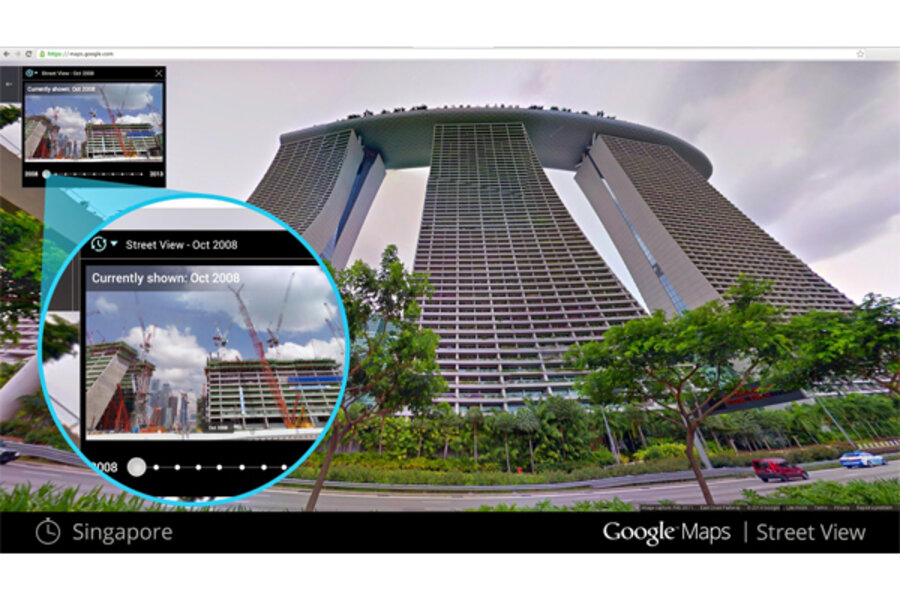Google Street View heads back in time
Have you ever wanted to time travel?
Google is bringing us a step closer to that experience. Google Street View has allowed curious Internet wanderers to freely globe trot the world from the comfort of their Aeron chairs since it launched in 2007. Now Google is putting that visual information in a virtual timeline, allowing users to click back through its image history of different locations and see the changes over time.
“Starting [Wednesday], you can travel to the past to see how a place has changed over the years by exploring Street View imagery in Google Maps for desktop,” says Vinay Shet, Google Street View product manager in a blog post. “We've gathered historical imagery from past Street View collections dating back to 2007 to create this digital time capsule of the world.”
Here’s how it works. If you are on the desktop version of Street View and see a clock icon in the upper left-hand corner, click on the icon and you’ll see a slider of different images from years potentially dating back to 2007 (some areas have more documentation than others).
You’ll see the Freedom Tower in New York City rise from a skeletal structure of beams to a gleaming skyscraper. The 2014 World Cup stadium in Fortaleza, Brazil, grows from a vacant lot to a massive nest of steel. Debris and destruction in Onagawa, Japan, is slowly cleared away following the 2011 earthquake and tsunami.
“Forget going 88 mph in a DeLorean—you can stay where you are and use Google Maps to virtually explore the world as it is—and as it was,” adds Mr. Shet.
This new feature adds double the amount of images previously accessible via Google Street View, according to Time. Street View has captured over 5 million miles of the earth in more than 50 countries.
This is just the latest feature rolled out from Google that makes the world a little more accessible from your desktop. Google has begun to branch out into less accessible sites, most recently the Angkor Wat temple in Cambodia and Britain’s rivers and canals.







